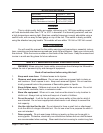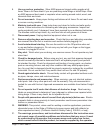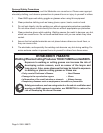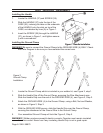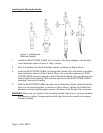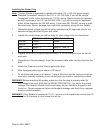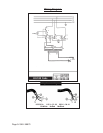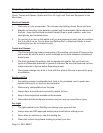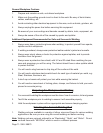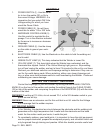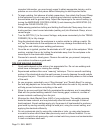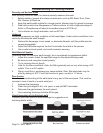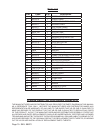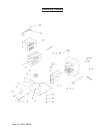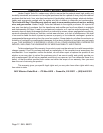
Page 10- SKU: 98870
Preparing a Safe Workplace Environment to Avoid Hazardous Conditions
The primary hazards to be managed when using Arc Welding equipment include Electric
Shock, Fumes and Gasses, Sparks and Fire, Arc Light, and Tools and Equipment in the
Work Area.
Electrical Hazards
Work only in a dry environment. This includes dry clothing, shoes, oors and tools.
Maintain an insulation layer between yourself and the electrodes, the workpiece and
the oor. Keep the Electrode Insulated Handle Grips in good condition, wear insu-
lated gloves, and insulated shoes.
Do not plug in or turn on the welder until you are prepared to work, and are condent
that it is safe to do so. Do not allow the Welding Rod, or Electrode Holder to touch
anything that you do not intend to weld.
Fumes and Gasses
The Flux and alloying metals components of the welding rods gives off fumes as the
rod is used. Be sure to work in a well-ventilated are to avoid excessive inhalation of
these fumes.
The heat generated by welding, and the sparks and splatter that can y out can
ignite any ammable materials or gasses in the area. Be sure that there are no am-
mable materials in the are before beginning to weld.
Work piece coatings may burn or fume with Arc ignition. Be sure to provide for prop-
er ventilation.
Sparks and Fire
Arc welding creates considerable heat, both in the workpiece, and in sparks and
splatter that may y or drip from the workpiece.
Remove any combustibles from the area.
Always have a second person present to watch for res.
Keep a re extinguisher available at the worksite.
Remember that the workpiece becomes very hot, and can cause re or injury.
Arc Light
The light created by Arc Welding can damage your eyes and skin.
Always wear an ANSI approved welding face shield before striking an arc.
Never allow an onlooker to view the welding Arc.
Wear dark colored long sleeve clothing to protect your skin.
1.
2.
3.
1.
2.
3.
1.
2.
3.
4.
5.
1.
2.
3.
4.



